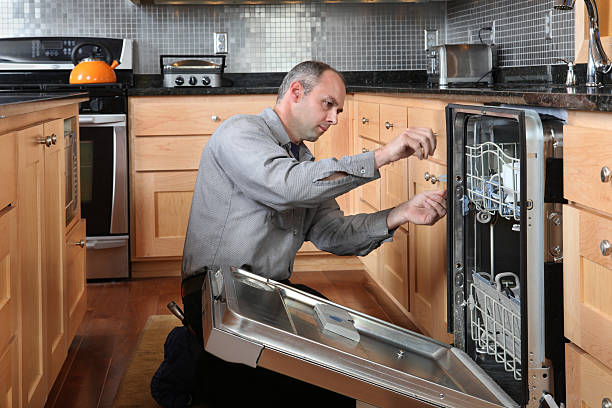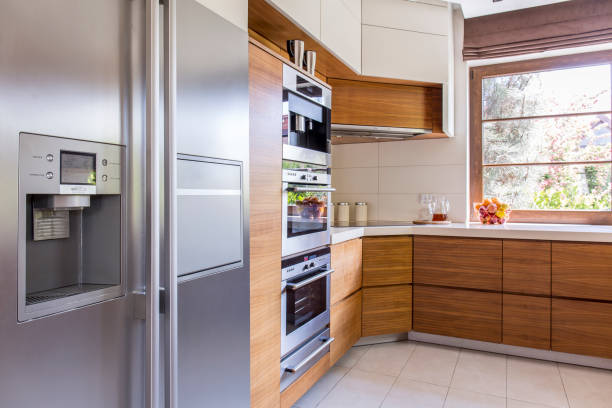
Stainless steel is corrosion-resistant, durable, and exceptionally popular. While your Sub-Zero refrigerator, Cove dishwasher, or Wolf oven is extremely reliable and long-lasting, it is vulnerable to fingerprints, staining, smudges, streaks, water spots, and all kinds of dirt and residue. Stainless steel can also rust if not properly cared for. But there are ways to keep your appliances, and kitchen, always looking clean and fresh.
Use the Right Stainless-Steel Cleaners
You probably don’t have to go out and buy new cleaning solutions. Warm soapy water or water and vinegar on a cotton cloth are often enough, or you can use simple dish soap and water. Club soda is also non-abrasive and effective when used with a cotton cloth. Dampen the cloth and wipe down the appliance surfaces without the risk of damage.
For stubborn grease and grime, you can mix vinegar and baking soda. Lemon oil furniture polish, applied to a rag, works too (don’t apply it directly to the surface). You can even use WD-40, which is very effective at cleaning stainless steel. Just don’t get it in on surfaces used to prepare food. A safer and more reliable option, however, is Windex.
When you’re finished, remember to dry the appliance to avoid dark spots and streaks caused by liquid residue. And don’t underestimate the power of stainless cleaners, which usually have mineral oil to shield appliances’ protective outer layer. If fingerprints are a problem, a glass cleaner will do the trick.
What not to use: Avoid using abrasive chemicals or anything with bleach, ammonia, or chlorides or oven cleaners that can damage the metal finish. Disinfectants aren’t the right cleaning agents for stainless steel appliances. Don’t use alcohol either.
Best Cloth for Cleaning Stainless Steel Appliances
While paper towels may be readily available, they are not the best for cleaning stainless-steel appliances. Plus, they absorb the oil that creates that after-clean shine. Use cotton or a microfiber cloth to avoid scratches and leave a shiny finish. Avoid steel wool or anything that is rough or bristled.
Polishing Your Stainless-Steel Appliances
You can polish stainless steel appliances with olive oil. A combination of white vinegar and olive oil works as well when applied with a microfiber cloth or as a spray. Let the solution sit for a minute and then wipe it clean. Any residue that’s left behind can be wiped away with a clean cloth.
Go with the Grain
Stick to this rule no matter what cleaning product or method you use. Stainless steel has a grain, or flow, like wood does. Clean and polish it in the same direction as the grain to prevent dirt and residue from being pushed into tiny grooves in the surface. Otherwise, the appliance will look dirtier after you clean it.
What About Rust Spots?
If your stainless-steel appliance begins to rust, you can use a stainless cleaner or brightener, or baking soda and water, rubbing gently with the grain. Then rinse with clean water and a soft cloth and dry the surface. You can also check for cleaning instructions in the owner’s manual or call the manufacturer for advice on cleaning rust off your refrigerator, oven, or dishwasher.
Call Wilshire Refrigeration for Installation and Service
At Wilshire Refrigeration & Appliance, we sell, install, and service some of the most popular stainless-steel appliances on the market. You can reach out to us for cleaning advice any time. When you need repairs or maintenance, we offer same-day, factory-certified service. Submit a request online or call us at 800-427-3653 to get started.



